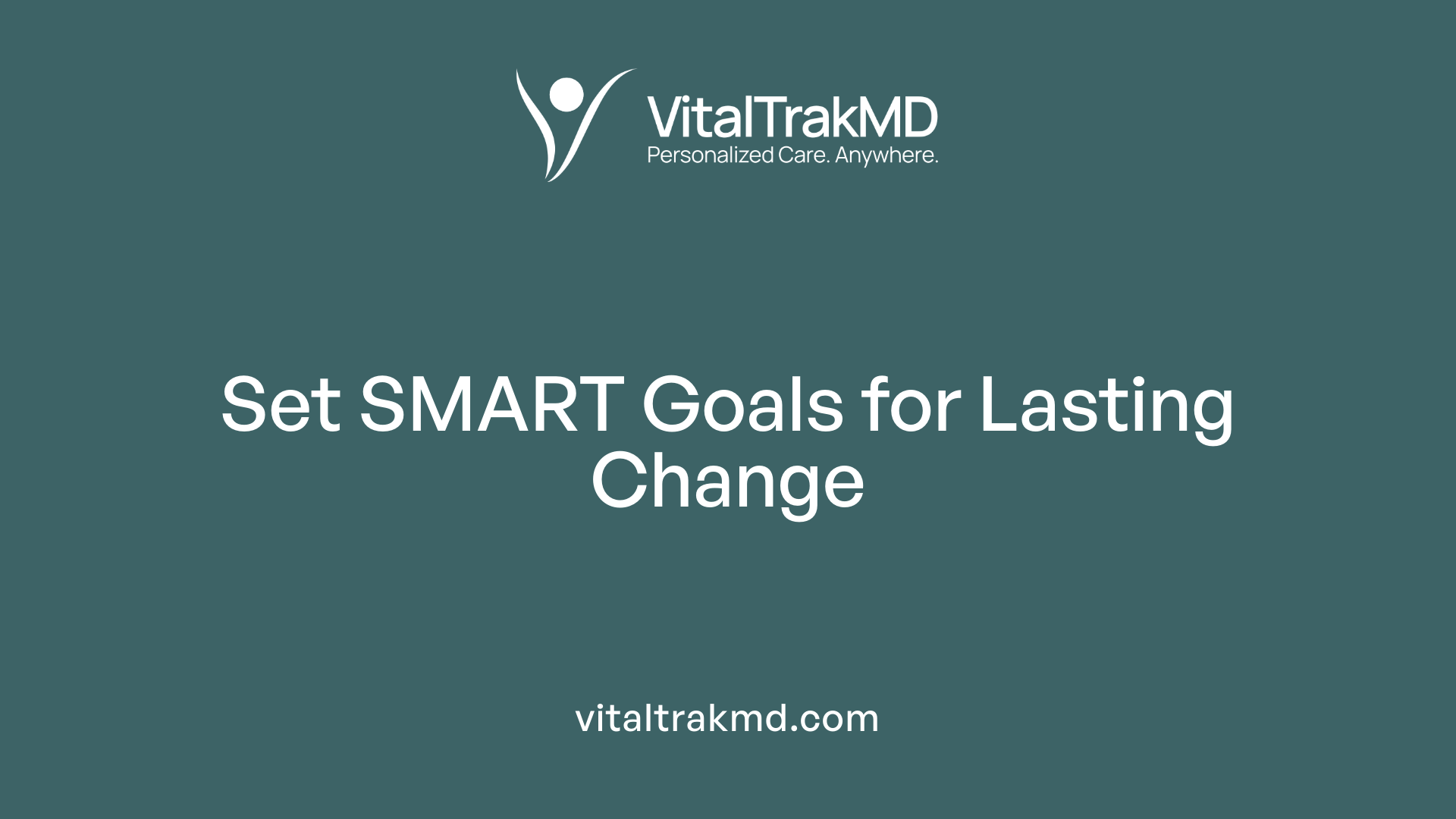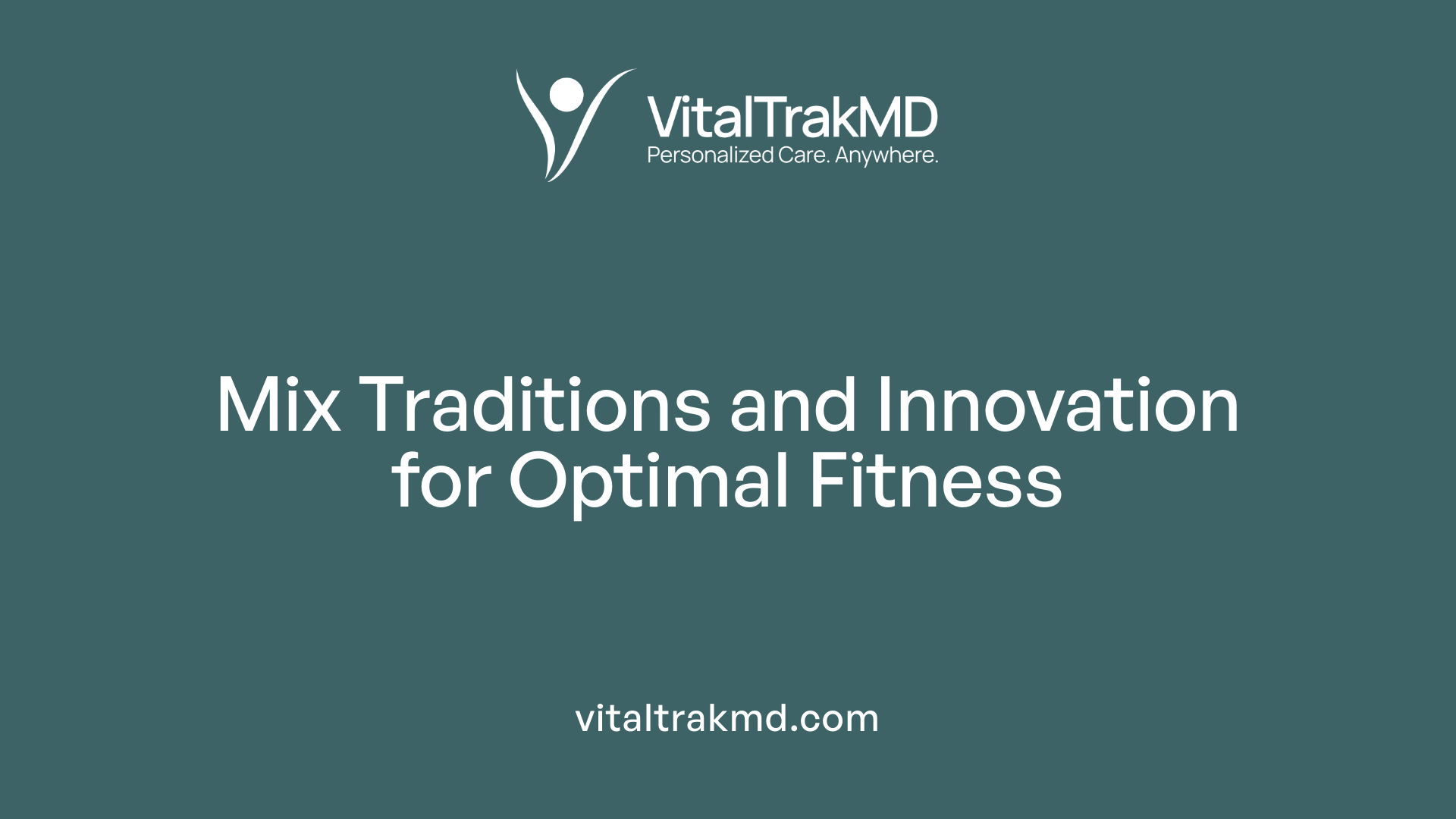Developing Personalized Exercise Plans Within Hybrid Programs

Crafting Personalized Fitness Pathways
In the evolving landscape of health and wellness, personalized exercise plans that integrate both human insight and technological advancement are proving essential. By considering individual preferences, goals, and lifestyle nuances, hybrid programs are increasingly tailored to foster sustainable weight loss, improved physical fitness, and overall well-being. This article explores how combining personalized exercise regimens with hybrid coaching models can accelerate progress and enhance motivation.
Assessing Individual Baselines to Tailor Effective Hybrid Plans

Why Is Assessing Baseline Fitness Important?
Understanding an individual's current fitness level sets the foundation for a personalized and effective weight loss plan. It helps identify areas of strength and weakness, allowing for a tailored approach that can address specific needs. For example, studies involving older adults showed that measuring various physical fitness factors, such as grip strength and walking speed, is vital in designing interventions that improve overall physical function.
How Should Nutritional Habits Be Evaluated?
A thorough evaluation of eating patterns, food preferences, and portion sizes is essential to establish a nutrition plan that supports weight loss goals. Personalized dietary plans emphasize balanced meals rich in whole foods and incorporate portion control. By combining this with individual preferences, the likelihood of adherence and long-term success increases.
Why Align Exercises with Personal Goals and Preferences?
Selecting physical activities that resonate with personal interests and goals improves engagement and motivation. Hybrid exercise programs that combine activities like Wu Qin Xi—a traditional Chinese exercise—with strength and endurance training have been proven especially effective in frail older adults. This alignment helps enhance physical fitness factors and encourages consistent participation.
By carefully assessing baseline fitness and nutritional habits and choosing exercises aligned with personal goals, hybrid plans become more effective, sustainable, and enjoyable for individuals seeking weight loss and health improvements.
Setting SMART Goals and Sustainable Lifestyle Changes for Long-Term Success

What Are SMART Milestones?
SMART stands for Specific, Measurable, Achievable, Relevant, and Time-bound. Setting goals that meet these criteria allows individuals to clearly define what they want to achieve, track their progress accurately, and stay motivated. For example, instead of saying "I want to lose weight," a SMART goal would be "I aim to lose 5 kilograms in 10 weeks by exercising three times a week and controlling my portion sizes."
Why Incorporate Stress Management, Sleep, and Hydration?
Long-term weight loss success depends not just on diet and exercise, but on sustainable lifestyle changes. Managing stress effectively prevents emotional eating and supports mental well-being. Adequate sleep improves metabolism and recovery, while proper hydration aids digestion and energy levels. Including these factors ensures a holistic approach to health rather than quick fixes.
How Do Flexibility and Regular Reassessment Help?
Adapting plans based on progress and changing needs is crucial. Regularly assessing fitness and nutrition routines helps identify plateaus or challenges early. Being flexible allows modifications, such as adjusting workout intensity or meal composition, which keeps motivation high and prevents stagnation.
Integrating SMART goals with sustainable habits like stress control, sound sleep, and hydration forms a robust foundation for lasting weight loss success. Regular plan evaluations and adaptability ensure continued growth and engagement in personalized programs.
The Role of Hybrid Exercise Models: Combining Traditional and Innovative Practices

Integrating Wu Qin Xi with strength and endurance exercises
A hybrid exercise program that blends Wu Qin Xi—a traditional Chinese exercise—with strength and endurance training offers a comprehensive approach to improving physical fitness in older adults. Wu Qin Xi involves movements inspired by five animals, promoting flexibility, balance, and coordination. When combined with modern strength and endurance exercises, this regimen addresses multiple dimensions of fitness vital for older populations.
Benefits observed in older adults
A study involving 181 frail older adults over a 24-week period demonstrated remarkable outcomes from the hybrid program. Nearly 42% of participants reversed their frailty status, highlighting the intervention's effectiveness. This combined exercise approach not only enhanced physical function but also contributed significantly to overall health improvements, empowering older adults to regain independence and quality of life.
Physical fitness factors improved
The research measured six physical fitness factors: body height, body mass, Timed Up and Go Test, grip strength, 6-minute walk test, and 10-meter maximum walk speed. Notably, grip strength and the 10-meter maximum walk speed showed significant improvements, especially within the group practicing Wu Qin Xi alongside strength and endurance activities. These gains suggest enhanced muscle function and mobility, key determinants in reducing fall risk and increasing daily activity capability for older adults.
Harnessing Human-AI Collaboration to Boost Weight Loss Outcomes

What Impact Does Human Coaching Have When Combined With AI?
Studies show that integrating human coaches into AI-powered weight-loss programs significantly enhances user success. One extensive analysis of about 65,000 users of the HealthifyMe app over three years found that individuals receiving both human and AI support lost an average of 2.12 kg (4.67 pounds) in three months. In contrast, users relying solely on AI coaching lost only 1.22 kg (2.69 pounds) during the same period.
How Does This Combined Support Boost Engagement?
Users with human coaching set more ambitious weight loss goals and demonstrated higher engagement levels by logging meals nearly twice as often and monitoring their weight more frequently. This increased interaction promotes accountability and motivation, which are crucial for sustained weight management.
Which Groups Benefit Most From Hybrid Human-AI Coaching?
The advantages of combining human guidance with AI support are especially pronounced among women, older adults, and individuals with lower starting Body Mass Indexes (BMIs). These demographics tend to experience greater motivation and better outcomes, showcasing the potential for tailored approaches within digital health.
Overall, hybrid human-AI coaching provides a powerful, scalable framework to personalize wellness programs effectively, offering enhanced motivation and superior weight loss results compared to AI alone.
Utilizing Predictive Analytics for Personalized Program Adjustments

How can machine learning predict frailty reversal?
Machine learning techniques, especially stacking models, have been effectively applied to predict the likelihood of frailty reversal among older adults participating in exercise interventions. These models process comprehensive data, such as physical fitness metrics from a 24-week hybrid exercise program combining Wu Qin Xi, strength, and endurance exercises, to identify patterns that anticipate improvement outcomes. This predictive capability enables more targeted and personalized care.
Why is adaptation and personalization important in wellness plans?
Regular assessment and flexibility are crucial to overcoming plateaus and maintaining motivation during wellness programs. Machine learning insights allow practitioners to adjust fitness and nutrition regimens in real-time, tailoring them to an individual's evolving needs, preferences, and responses. This dynamic personalization ensures meal plans, exercise selections, and lifestyle modifications remain aligned with personal goals and promote lasting success.
How does data-driven insight enhance motivation?
Data-driven feedback from predictive analytics fosters engagement by setting realistic targets and tracking progress through SMART milestones. Participants with access to enriched support—including AI models combined with human coaching—demonstrate higher motivation levels, more frequent activity tracking, and goal setting. This synergy boosts weight loss outcomes and frailty reversal rates by reinforcing commitment and providing adaptive guidance throughout the journey.
Integrating Personalized Plans and Hybrid Support for Optimal Wellness
Developing personalized exercise plans within hybrid programs represents a transformative approach to wellness. By thoroughly assessing individual baselines, setting SMART goals, incorporating sustainable lifestyle habits, and utilizing a blend of traditional exercise practices with innovative technology, these programs maximize efficacy and engagement. The combination of human coaching and AI not only enhances motivation and adherence but also allows for data-driven personalization that adjusts to an individual's evolving needs. As the wellness industry advances, embracing hybrid personalized plans will be essential for achieving long-lasting health and vitality.
References
Recent articles
Want to Feel Better and Live Healthier?
Join hundreds of patients taking control of their health with personalized care that fits their life – not the other way around.
Rated 4.8/5 by 32+ customers







